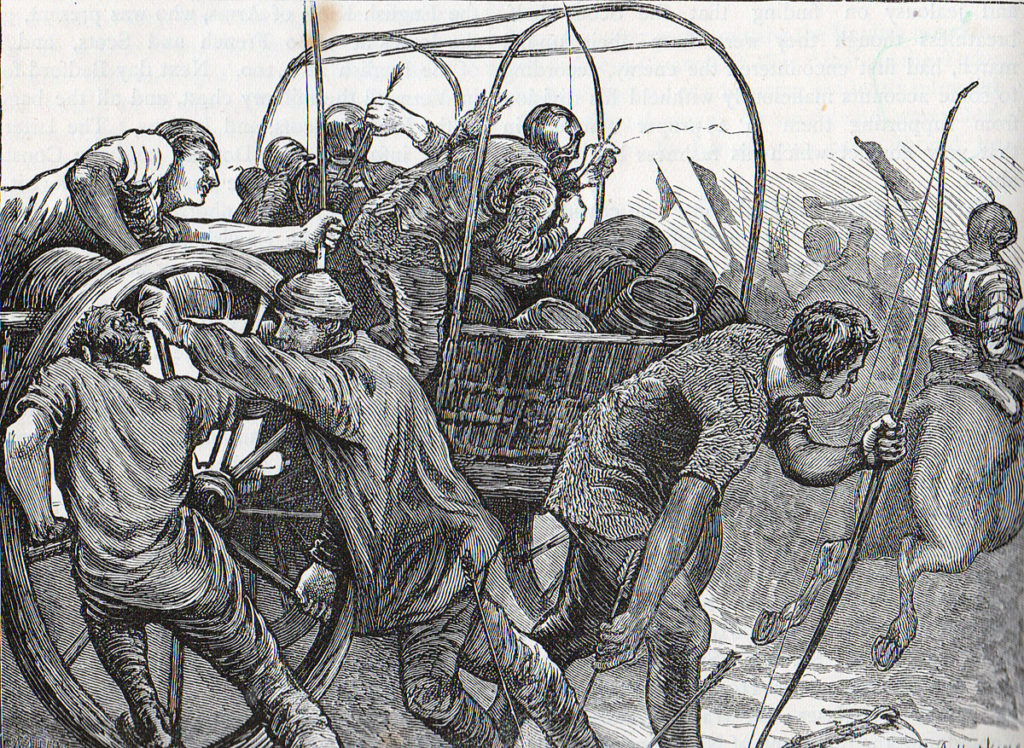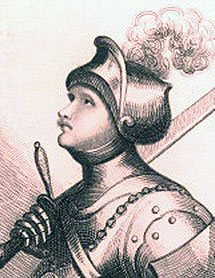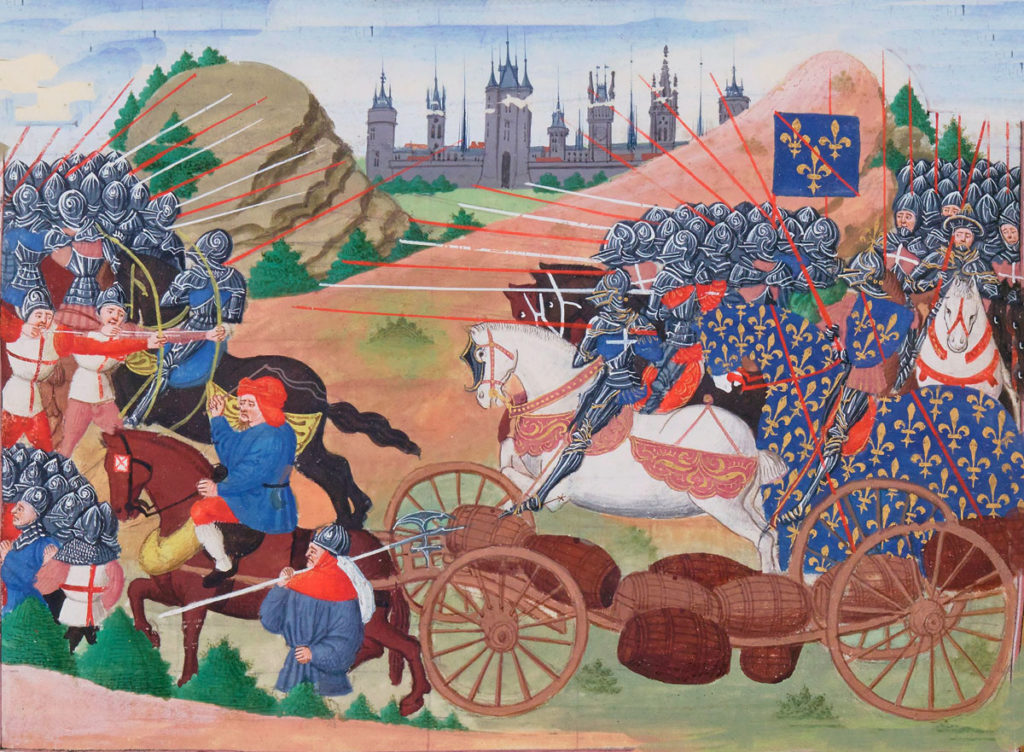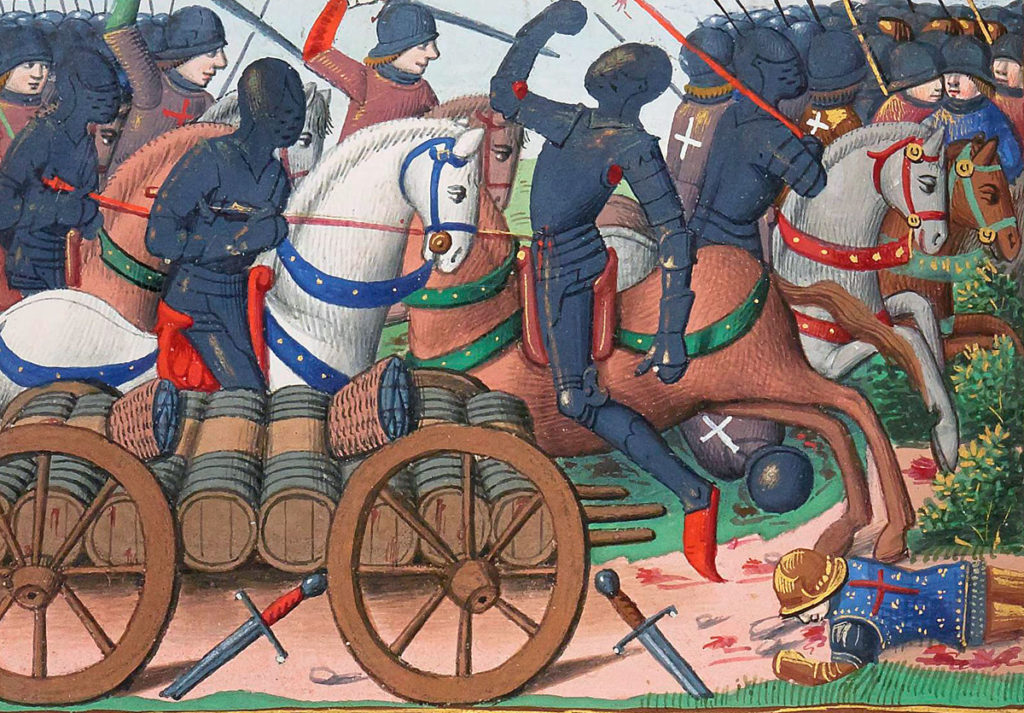The successful defence of a supply column bringing Lenten fare to the army of the Earl of Salisbury besieging Orleans on 11th February 1429 in the Hundred Years War
The previous battle of the Hundred Years War is the Siege of Orléans
The next battle of the Hundred Years War is the Battle of Patay
War: Hundred Years War.
Date of the Battle of the Herrings: 11th February 1429
Place of the Battle of the Herrings: Near the small town of Rouvray to the north of Orléans
Combatants at the Battle of the Herrings: An English force defended the supply column against French and Scots Dauphinist troops.
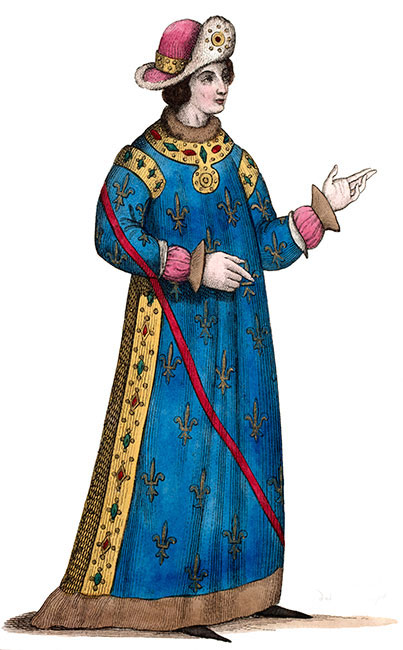
Commanders at the Battle of the Herrings: Sir John Fastolfe commanded the English force.
The Comte de Clermont commanded the French army marching up from Blois. Sir John Stewart of Darnley, the Scottish Constable in France, commanded the Scots. The contingent from the French garrison of Orléans was led by Dunois, half-brother of the Duke of Orléans, known as ‘the Bastard of Orléans’.
Size of the armies at the Battle of the Herrings: The English army numbered around 1,000 men. The Franco-Scottish contingents numbered around 5,000 men.
Uniforms, arms and equipment at the Battle of the Herrings: Knights increasingly wore steel plate armour with visored helmets. Their weapons were lance, shield, sword, various forms of mace or club and dagger. Many carries two-handed swords in battle. Each knight wore his coat of arms on his surcoat and shield.
There were contingents of archers with both the English and Scottish contingents.
The archers carried a powerful bow, capable of many aimed shots a minute.
For hand-to-hand combat archers carried swords, daggers, hatchets and war hammers. They wore jackets and loose hose. Archers’ headgear was a skull cap either of boiled leather or wickerwork ribbed with a steel frame.
The Lombard knights that fought for the French are reported as riding ‘barded’ horses: that is horses in ‘horse armour’: the reason, it is claimed, for their being enabled to overwhelm the archers of the English reserve.
Horses were particularly vulnerable to arrows and, it is said, that the Lombards’ ‘barding’ enabled their horses to survive the English arrow-discharges.
By the time of the Battle of the Herrings, artillery was a well-established weapon of war.
The French force attacking the English convoy at the Battle of the Herrings began the battle with a sustained and effective bombardment of the English waggons.
Winner of the Battle of the Herrings: The English escort to the supply convoy decisively repelled and French and Scots attack, inflicting heavy casualties and capturing the French artillery.
Events leading to the Battle of the Herrings:
In 1428, the English with their Burgundian allies controlled Paris and much of Northern France.
The Dauphin, the mainspring of French resistance to the invading English, ruled France south of the River Loire, from his de facto capital, the city of Bourges.
In mid-1428, the English regent and military commander, the Duke of Bedford, resolved to capture the City of Orléans.
Orléans lies mid-way between Paris and Bourges and is an important crossing point on the River Loire, the northern boundary of the Dauphin’s territory.
In October 1428 the English army, commanded until his death in November 1428 by the Earl of Salisbury and thereafter by the Earl of Suffolk, began the siege of Orléans.
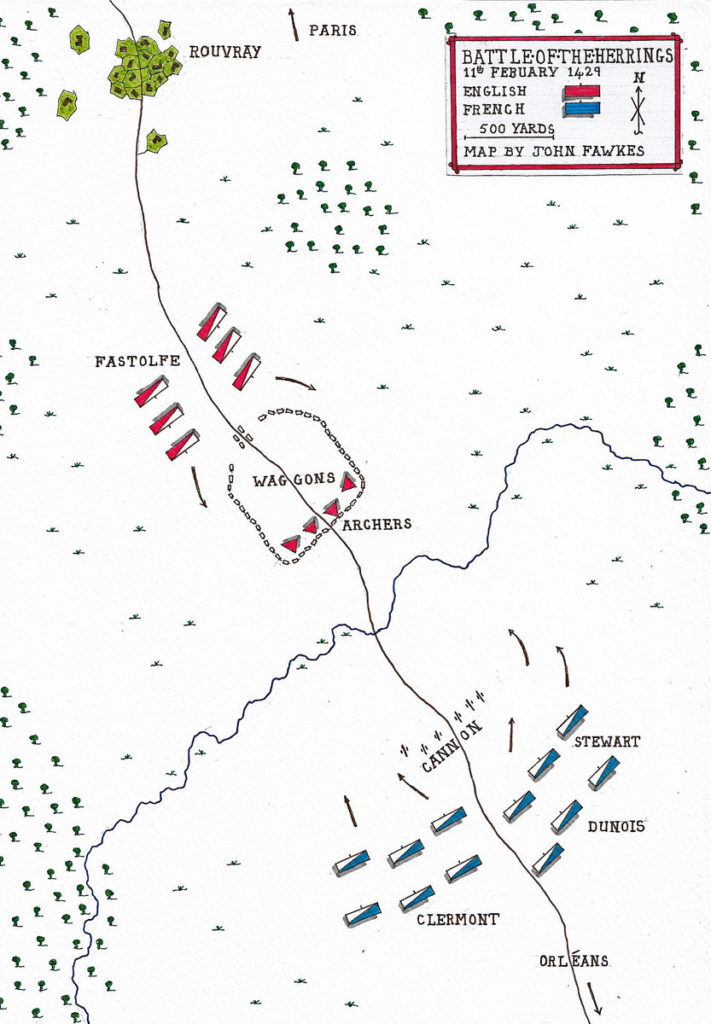
Battle of the Herrings:
In February 1429, a convoy of 300 waggons left Paris carrying supplies of food, arrows, gun-powder and cannon balls for the English army besieging Orléans.
Part of the cargo was a consignment of herrings to be eaten in the season of Lent, a time when the Catholic Church disapproved of the eating of meat.
The convoy was escorted by 1,000 mounted archers and mounted men-at-arms commanded by Sir John Fastolf.
On 11th February 1429, the herring convoy reached the town of Rouvray.
The next morning the convoy left Rouvray heading towards Orléans, when mounted French troops were seen to the south-west.
Realising that these men were from a French army marching to intercept him, Sir John Fastolf stopped his convoy and formed the waggons into a leaguer on the road a mile from Rouvray, leaving two gaps in the chain of waggons, each guarded by archers.
The approaching French were a force from Blois led by the Comte de Clermont, recently joined by Dunois, ‘the Bastard of Orléans’, with a force of men-at-arms from the Orléans garrison.
Clermont halted his men and ordered the artillery to commence a bombardment of the waggon leaguer.
The result of the bombardment was damage to a number of waggons with the cargoes of herrings spilt onto the road.
Clermont’s force included the Scots contingent of men-at-arms constituting the Dauphin’s ‘Garde Ecossaises’, commanded by Sir John Stewart, the Constable of the Scottish Contingent in France and the Comte d’Aubigny.
Unwilling to leave the battle to the artillery, Stewart dismounted his men and led them into an attack on the waggon leaguer, thereby masking the French guns and forcing them to cease firing.
The Scots were subjected to the fire of the body of English archers and their attack was decisively repelled.
Clermont’s mounted men-at-arms followed the Scots in a charge against the leaguer but, unable to penetrate the waggon wall, were equally decisively beaten.
Fastolf now led his mounted men-at-arms out of the leaguer and scattered the remaining French troops, capturing the French cannon.
The waggon convoy continued on its way and delivered its supplies to the besiegers at Orléans.
The army led by Clermont was the force assembled to relieve Orléans. Any prospect of lifting the siege was lost for the time being.
Dunois and his men managed to evade Fastolf’s force and escape back into Orléans.
Casualties at the Battle of the Herrings:
French casualties at the ‘Battle of the Herrings’ were around 120 knights and 600 men-at-arms killed, among them Stewart of Darnley and one of his sons.
Dunois, the ‘Bastard of Orleans’, was wounded in the battle and was fortunate to escape and find his way back to Orleans.
English casualties at the ‘Battle of the Herrings’ were extremely light.
There seems to be some doubt as to whether the Rouvray given as the site of the Battle of the Herrings was the town of Rouvray-Saint-Denis or Rouvray-Sainte-Croix.
References for the Battle of the Herrings:
Cursed Kings, Volume IV of the four-volume record of the Hundred Years War by Jonathan Sumption.
The Art of War in the Middle Ages Volume Two by Sir Charles Oman.
The Hundred Years War by Burne
British Battles by Grant.
The previous battle of the Hundred Years War is the Siege of Orléans
The next battle of the Hundred Years War is the Battle of Patay
